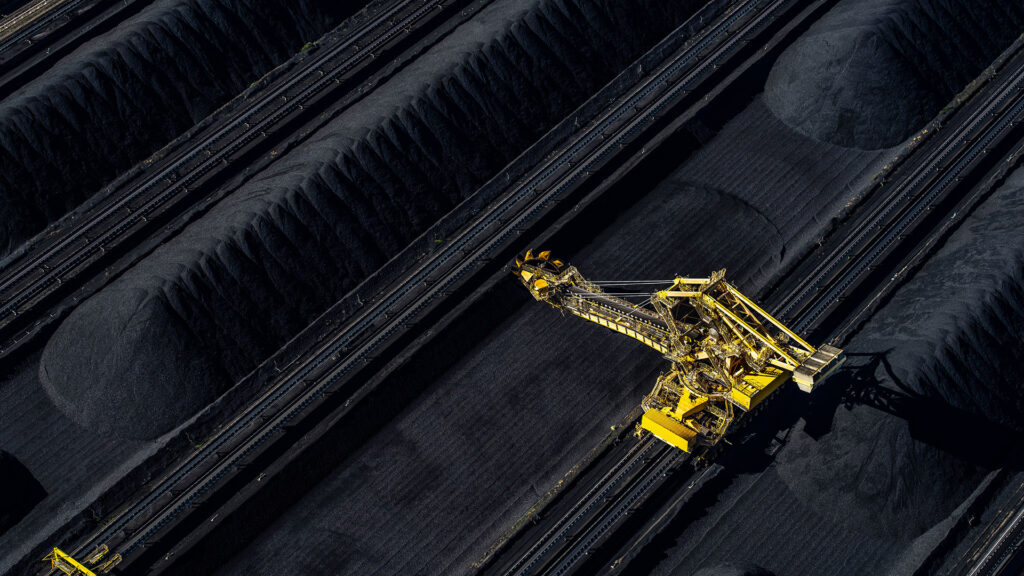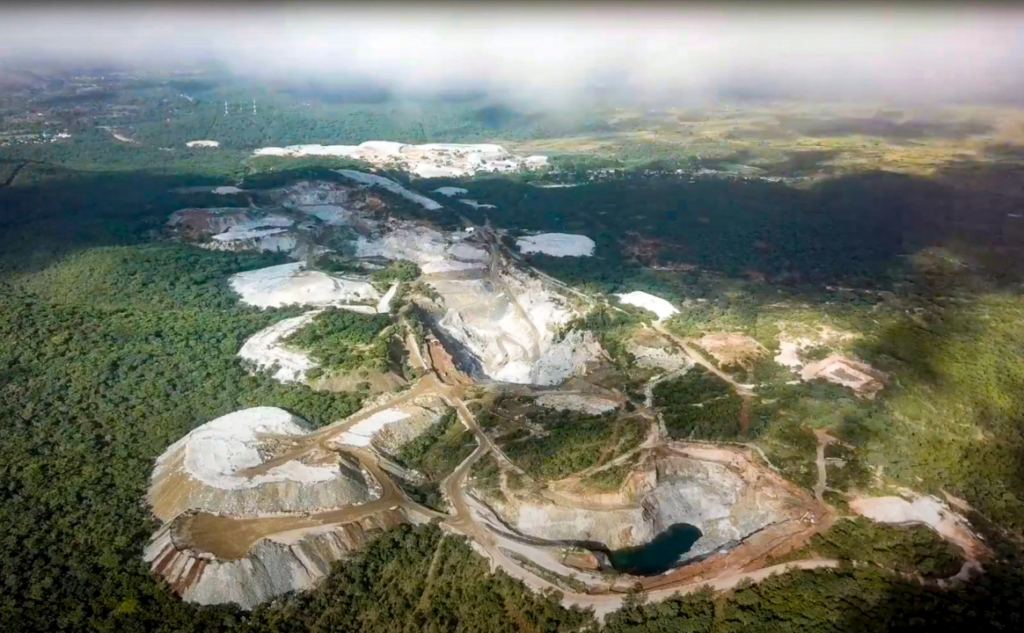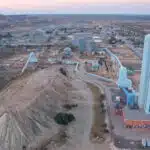Trending: Here are some Business Statistics and Trends to know

The mining industry is ever-evolving in the face of changing consumer demands, global political shifts, and advances in technology. As we get into the last quarter of the year and plan for 2025, several new trends in mining are emerging that will shape the future of the sector. One strong trend is the increased automation of operations, which allows for faster production processes with less human labor.
There has been an increase in energy efficiency strategies such as improving ventilation systems and using renewable energy to power equipment. Moving away from traditional methods, some companies have started re-processing tailings from decades ago to access new resources. Technological advancements are bringing greater transparency to the mining and metals sector by highlighting environmentally damaging practices.
In this blog post, we look at the top trends in the mining industry that making waves in 2023 and beyond.
Mining
The mining process involves extracting useful materials, such as coal, iron ore, diamonds, copper and gold, from the earth’s surface or underground depths.
What are the Mining Trends to Know?
1. Process Automation is becoming more important
With ore grades declining, automation has become critically important for miners in order to maintain and ensure their efficiency and profitability. Automation technology allows remote data analysis, enabling operations to upgrade processes and maximize results from existing ore supplies. Automation stands as a tool for miners that will be more valued even in the coming years beyond 2025.
The need for automation has made many new locations attractive mining sites – despite the challenges associated with reaching and working in these far-flung destinations. As high-grade ore becomes scarce, miners have begun turning back to formerly rejected regions, focusing on the use of automation to make it feasible.
The remote data analysis capabilities of automation technology make it possible for these areas to be viable sources of minerals and provide miners with an invaluable tool as they transition into the new year.
The mining industry has been using automation for decades, but in the coming years, it is likely to become more widespread than ever before. Automation of repetitive tasks such as ore sorting, ore grading, and blasting can improve efficiency and decrease the risk to workers.
The use of automated machinery is also expected to reduce the amount of energy required for certain processes, such as ore processing. This could have a positive impact on the environment by reducing emissions and waste from mining operations.
Automated systems could also help to increase safety measures, as machines can easily detect dangerous areas or hazardous materials. In addition, automated systems are often more accurate than manual labor and can lead to improved overall efficiency.
2. Green metals are set to power the energy transition
The ongoing energy transition to renewable sources of power is reliant on a range of ‘green metals’ to make the shift successful. Crucial materials such as copper, nickel, zinc lithium, and aluminum are essential for high-impact products like wind turbines and batteries for electric vehicles.
In order for this energy revolution to happen, mining companies must invest in new ore deposits of these green metals or find new ways to optimize the efficiency of existing mining operations and processing plants. This improved operation would necessarily have a focus on sustainability and net-zero emissions as well as the acquisition or extraction of green metals.
Investment in exploration of these deposits makes perfect sense; by increasing the supply chain security while limiting environmental harm it gives confidence that green metal demand can be met. Companies wishing to capitalize on this opportunity are looking to partner with miners who have already established operations and proven open-pit or underground production systems.
These partnership opportunities will bring global enterprises closer together making an adulterated supply chain that is both secure and backed up by leading certifications and regulation standards. The future is full of potential when it comes to the responsible use of green metals, understanding their importance, extent availability, safe removal, and optimal use should drive us all towards a greener future in 2023 and beyond.
3. Waste Re-Processing to boost declining ore grades ( Mineral Rich Tailings of the 70’s)
The decline of high-grade ore deposits is leading miners to look for new methods of extracting minerals from existing tailings, or waste material left after previous mining activities. Through technology such as sensor-based sorting, the re-processing of waste has become more efficient than ever before. Sensor-based sorting also reduces the need for manual labor and is more cost-effective, making it the preferred alternative in many cases.
The re-processing of lower-grade ores could provide a much-needed boost to mining operations around the world. It also has the potential to increase revenue by providing miners with otherwise inaccessible minerals that would otherwise be lost. With this challenge comes opportunity, and this technology will be in high demand in the coming years.
4. Improved Geotechnical and Geological Studies
Mining is a risky business, with miners facing potential dangers from ground instability and natural disasters. Computational tools are now available to help reduce this risk by providing detailed geological studies of potential sites.
These advanced geotechnical technologies provide real-time data that helps miners understand the subsurface environment and potential hazards of a particular site before they ever go underground.
Additionally, with the increasing demand for green metals, miners are now looking to sites with more complicated geological characteristics as well as harder-to-reach deposits. These technologies provide an invaluable tool to help them identify and access these difficult sites safely and efficiently.
With more accurate data on the subsurface environment, mining companies can have confidence that their operations will be undertaken safely and without risk to workers or the environment.
5. Removing waste early with geo metallurgy
Geometallurgy is a relatively new and innovative approach to the extraction of minerals from ore sources. It revolves around using technologies such as XRay Diffraction (XRD) or Near Infrared Spectroscopy (NIR) to track mineralogy, as well as the use of real-time analytical sensors to monitor ore streams on conveyor belts or process liquors in pipes. These methodological advances allow miners to sort and track material streams within a mine or processing plant with greater accuracy.
As a result, waste can be identified at an early stage, meaning that its presence during downstream processing is minimized. It also provides insight into the geometallurgical behavior of ores over time, helping miners make informed decisions regarding how best to go forward.
Tools like CNA on-line elemental analyzers Epsilon Xflow on-line liquid analyzers are increasingly being used as part of this innovative geometallurgy approach, allowing for more efficient sorting and tracking than ever before. With these solutions available at their fingertips, miners can take advantage of the cost savings that come with reducing waste by removing it earlier in the process – ultimately minimizing the overall environmental impact of their operations.
6. Processing more recycled materials
The use of recycled materials is becoming increasingly important in the mining industry. Companies are trying to find ways to increase their production levels while still being mindful of their environmental footprint. Processing more secondary materials in smelters is one such way that helps to reduce companies’ reliance on natural resources while also saving money.
Secondary materials, like scrap steel and copper wire, can be melted down and reused in various products. Companies are beginning to invest in online analysis technologies for these materials so they can accurately assess the quality of any material before it is brought into production.
In 2023, recycling initiatives will continue to be popular among those who mine for metals and other valuable substances. The benefits of reusing materials have been recognized by both governments and regulators since it minimize resource consumption and waste generation while also increasing productivity.
Online analysis systems will continue to develop due to their ability to quickly ascertain the quality of recycled materials before they are processed further downstream in the value chain. With such increased focus on sustainability as well as monitoring technology with regard to recycling, many mining operations are certain to get a major boost this year.
7. Industrial Internet of Things
The Industrial Internet of Things (IIoT) has drastically changed the way that mining operations are conducted, allowing for greater efficiency and resource utilization.
Digital sensors and smart devices are deployed on-site to monitor and record operational data automatically, but due to the often remote nature of many mining sites, accessing this data can be challenging. As data collected cannot be easily shared with stakeholders from mine operators to top management, this creates data silos that undermine the utility of sensor data.
Leveraging IIoT solutions provides a comprehensive view of an operation’s condition across time and locations. This global access enables companies to improve operational performance through real-time insights into trends and performance.
Mining companies can further optimize their processes with innovations such as smart measurements for power, water, and fuel consumption, real-time condition monitoring of equipment, autonomous vehicle operations, predictive maintenance capabilities, improved environmental compliance enforcement, and much more.
These improvements can enable quick reactions when unexpected events occur or potential issues arise before they reach a critical level that causes downtime or damage — ultimately resulting in increased efficiency and savings for energy consumption as well as improved safety throughout mining operations.
In Summary: Mining Trends
The mining industry is entering a period of rapid change, with the introduction of advanced technologies and new trends that will help shape the future of mining operations in 2023 and beyond.
Focusing on green metal production, re-processing waste, conducting geotechnical and geological surveys, and implementing automation are all key trends that miners should be aware of in order to remain competitive in the coming years. As the industry continues to evolve, so too must the miners, who must be willing to embrace these new technologies and strategies if they are to remain successful.
These top 7 mining trends present both opportunities as well as challenges to the sector’s participants; however, it is clear that changes must be made if companies wish to remain competitive in this fast-paced environment.
Taking advantage of data insights generated through technology will help miners drive cost-effectiveness and safety while staying on top of any emerging geopolitical or economic turmoil that might disrupt their operations. Companies must continue to innovate if they want to keep up with these ever-changing conditions and emerge successful within a few years’ time.





